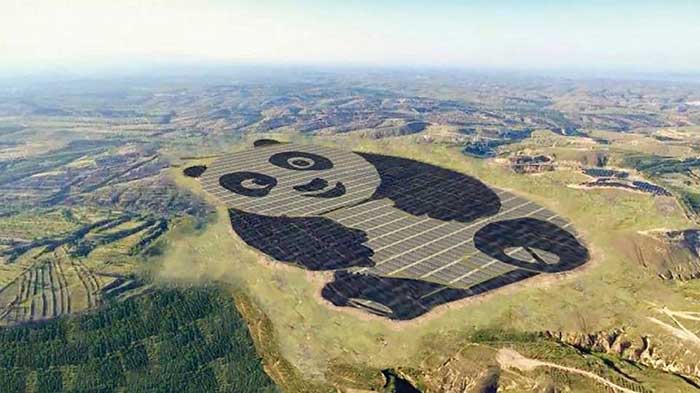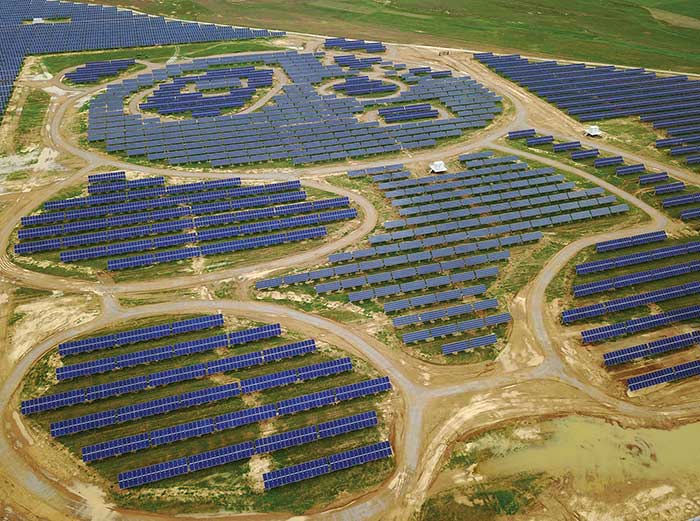Proudly called the national treasure of China, the giant panda is the rarest member of the bear family. Among the world’s most threatened species, the panda has also become the face of global conservation efforts worldwide. In an effort to represent both China and green energy, two panda-shaped solar farms were built on the mainland … with 98 more planned across China and Asia in the coming years.

An artist’s renditition of the panda solar farm in Datong, China. Courtesy of China Merchants New Energy Group/Panda Green Group.
Alan Li, CEO of Panda Green Energy, told Photonics Media that the first power plant constructed in Datong is 250 acres and has a total installed capacity of 100 MW.
“According to the estimation, a 100-MW Panda Power Plant can provide 3.2 billion kWh of green power in 25 years, which is equivalent to saving 1.056 million tons of standard coal or reducing 2.74 million tons of CO2 emission, 2600 tons of SO2 emission, 24,000 tons of nitrogen oxide emission, and 1600 tons of smoke and dust,” said Li.
There are three general types of solar panels used in the world today: monocrystalline silicon, polycrystalline and thin film. While thin films perform better in low light situations, monocrystalline and polycrystalline panels are the most commonly used options.
The Datong Panda Power Plant consists of 69,888 295-W monocrystalline modules, 94,248 310-W bifacial dual-glazed modules and 11,250 115-W thin-film modules that are staggered in an array that mimics the color and shape of China’s biggest icon.
The second solar farm is in Guigang and has a total installed capacity of 60 MW.
The Panda Power Plants are a green energy demonstration project jointly promoted by Panda Green Energy and the United Nations Development Programme (UNDP) to promote youth engagement in the sustainable energy movement. It is also part of China’s Belt and Road Initiative along the historic Silk Road that connects Asia to Europe.

Monocrystalline, bifacial dual-glazed modules and thin-film modules that make up the Panda Power Plant in Datong. Courtesy of China Merchants New Energy Group/Panda Green Group.
As more diversified Panda Power Plants are built, China hopes to receive visitors from the “Belt and Road” countries. They also hope to bring their creative eco-development solutions to other countries.
“Panda Power Plants will be built as first-class solar power plants and become the pioneer with leading technology and patterns in the new energy field,” said Li. “Panda Power Plants are outlined overall as butterfly wings, which mean the plants will make the butterfly effect and bring on the global green movements.”
The butterfly effect states that “small causes can have larger effects.” And while the Panda Power Plants aren’t small by any means, they can be a small starting point for the future of renewable energy growth.